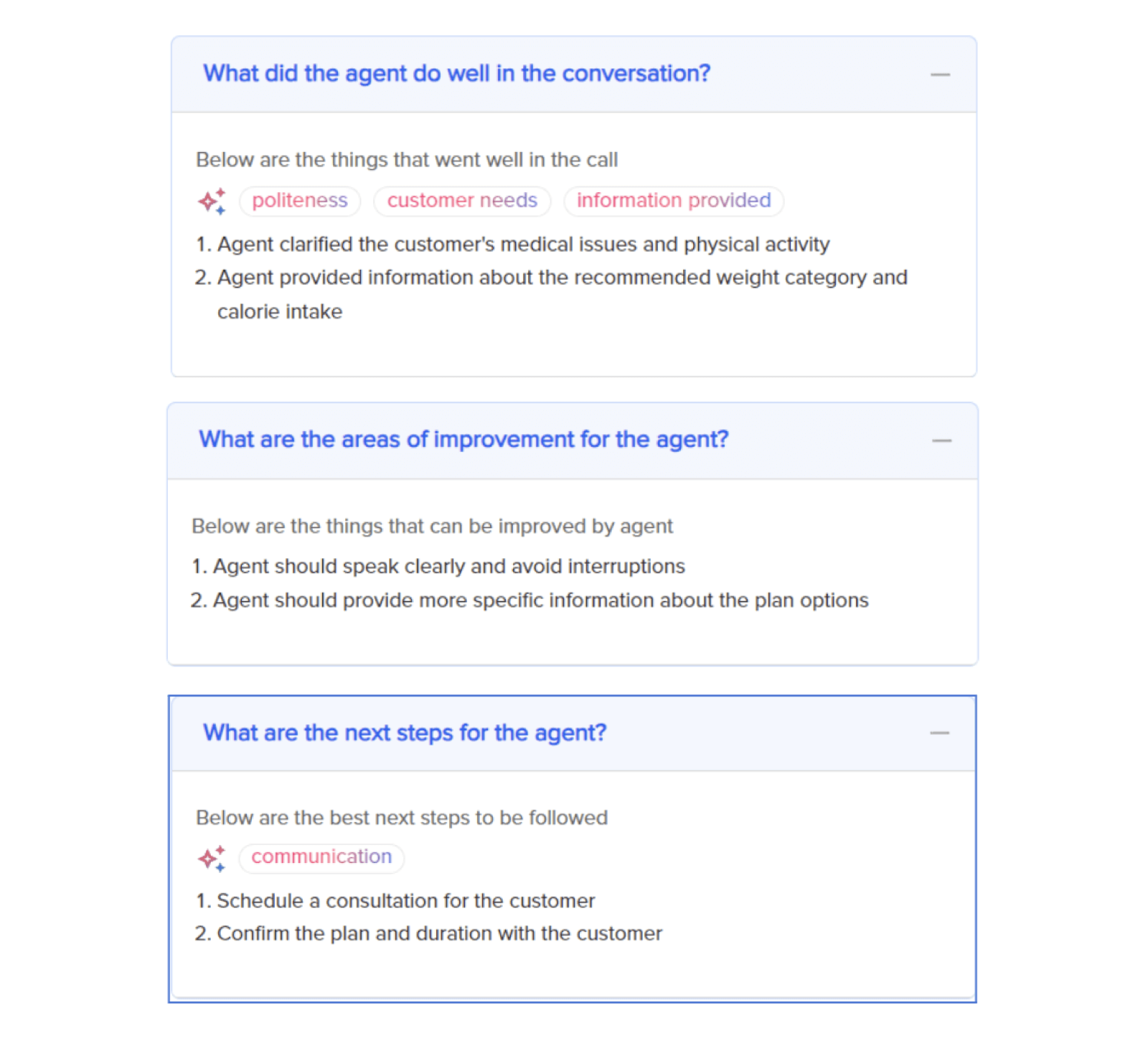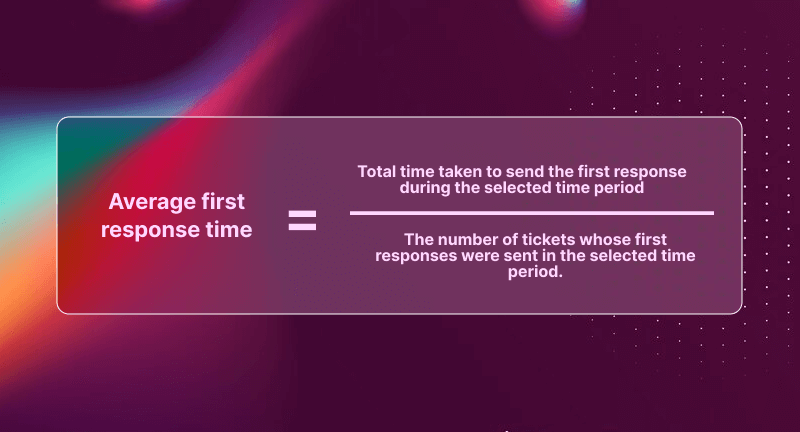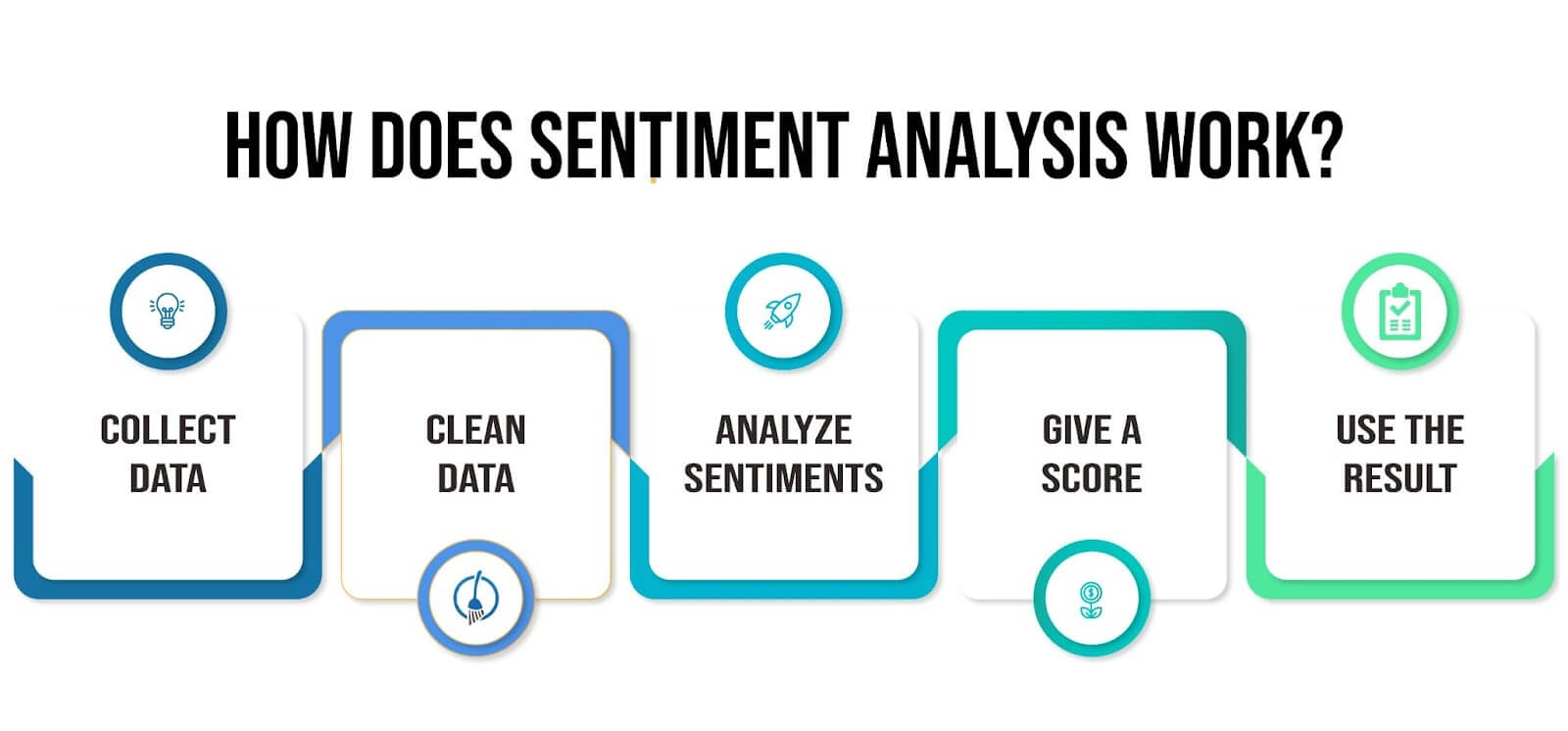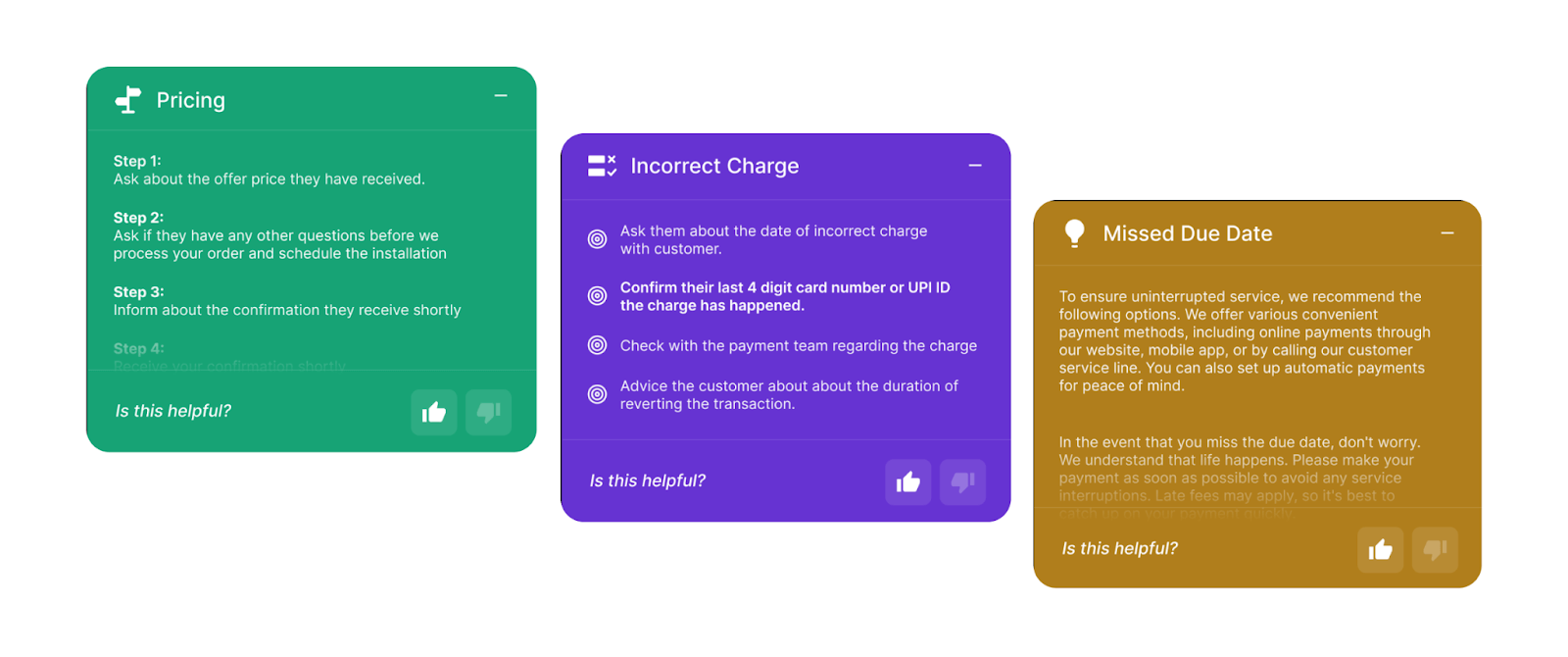
In today's competitive business landscape, understanding the Voice of the Customer (VoC) has become paramount for organizations aiming to deliver exceptional Customer Experience (CX).
Voice of Customer is more than just a buzzword; it's a valuable tool that allows companies to gain insights into their customers' preferences, expectations, and needs.
In this blog post, we'll explore the concept of VoC, its role in enhancing CX, and why it is crucial for businesses.
Voice of Customer Analysis and give your customers what they expect!
What Is Voice of Customer Definition?
Voice of customer VoC refers to the collection and analysis of feedback, opinions, and insights from customers regarding their experiences with a product, service, or brand. It represents the authentic and unfiltered voice of your customers, providing valuable information on what they like, dislike, and desire. VoC encompasses various forms of customer feedback, such as surveys, reviews, social media comments, emails, and direct interactions.
Understanding Customer Experience (CX) and How it Relates to the Voice of Customer?
Customer experience (CX) encompasses all interactions and touchpoints between customers and a company throughout their journey, from initial awareness to post-purchase support. It's the sum of every encounter a customer has with a brand, influencing their perception and loyalty
A great CX can lead to customer satisfaction, loyalty, and advocacy, while a poor one can result in dissatisfaction, churn, and negative word-of-mouth.
1. Customer Experience (CX)
a. Holistic Customer Journey: CX encompasses the entire spectrum of interactions that customers have with a company. It begins with the initial touchpoint when customers become aware of a brand's existence. This can happen through various channels, such as advertising, social media, or word-of-mouth recommendations.
b. Multiple Touchpoints: As customers progress in their journey, they encounter various touchpoints. These touchpoints include visiting the company's website, engaging with customer service, making a purchase, using the product or service, and seeking post-purchase support. Each of these touchpoints contributes to the overall CX.
c. Influencing Perception: The quality of each interaction and the consistency of the experience across touchpoints significantly influence how customers perceive the brand. Positive experiences at every step can build trust, increase brand affinity, and result in customer satisfaction.
d. Building Loyalty and Advocacy: A great CX goes beyond mere satisfaction. It fosters customer loyalty, where customers not only return for repeat business but also become advocates who promote the brand to others. Loyal customers are more likely to provide positive feedback, refer friends and family, and defend the brand in case of negative comments or experiences.
e. Consequences of Poor CX: Conversely, a poor CX can have severe repercussions. Customers who encounter problems, face inconsistencies, or feel undervalued are likely to be dissatisfied. This dissatisfaction can lead to churn, where customers abandon the brand in search of better experiences. Negative word-of-mouth can also damage the brand's reputation, potentially deterring new customers.
Customer Experience (CX) is the holistic view of customer interactions with a brand, encompassing all touchpoints in their journey. It is pivotal in shaping customer perception, loyalty, and advocacy.
Now, let's connect Customer Experience (CX) with the Voice of the Customer (VoC).
2. Voice of the Customer (VoC)
a. Collecting Customer Feedback: VoC is the process of actively collecting feedback from customers at various stages of their journey. This feedback can come in many forms, including surveys, reviews, social media comments, emails, and direct interactions. It represents the unfiltered and authentic voice of customers.

b. Insights into CX: VoC is a vital tool for understanding the quality of CX. By analyzing the feedback provided by customers, companies can gain valuable insights into what aspects of the CX are working well and where improvements are needed. Customers often share their likes, dislikes, suggestions, and pain points, all of which are crucial for enhancing the overall customer experience(CX).
c. Data-Driven Improvements: VoC data serves as a foundation for data-driven decision-making. It enables companies to identify specific areas that require attention and investment. Companies can address issues, fine-tune their processes, and align their products or services more closely with customer expectations, thereby improving the overall CX.
d. Continuous Enhancement: VoC is not a one-time effort but an ongoing process. Regularly collecting and analyzing customer feedback allows companies to stay agile and adapt to evolving customer preferences. This iterative approach ensures that the CX remains relevant and competitive in a dynamic marketplace.
The Voice of the Customer (VoC) is an invaluable source of feedback that helps companies understand and improve CX by listening to customers' preferences and needs. By effectively leveraging VoC, organisations can create a positive CX that not only satisfies but delights customers, ultimately driving business success.
Now that we've explored the concept of Customer Experience (CX) and its connection to the Voice of the Customer, let's delve into why companies must grasp the significance of understanding the Voice of the Customer.
Results first, payment later.
Why Companies Should Understand the Voice of the Customer?
In today's ever-evolving business landscape, where customer expectations are constantly on the rise, understanding the Voice of the Customer (VoC) is not just a competitive advantage but a necessity. The VoC represents the authentic and unfiltered opinions, desires, and experiences of your customers, and its importance cannot be overstated.
1. Customer-Centricity
- Demonstrating Customer Value: Embracing VoC signals to customers that their opinions matter and that the company is genuinely interested in meeting their needs. It reflects a customer-centric approach, highlighting that the company places a high value on customer satisfaction and loyalty.
- Fostering Trust: By actively listening to and acting upon customer feedback, companies build trust with their customer base. This trust is a cornerstone of long-term relationships, encouraging repeat business and positive word-of-mouth referrals.
2. Competitive Advantage
- Adaptation to Changing Preferences: Companies that collect and analyse VoC data gain a significant competitive edge. This is because they can adapt swiftly to changing customer preferences and market dynamics. Staying ahead of competitors requires being attuned to what customers want and need in real-time.
- Market Leadership: Proactively addressing customer concerns and consistently delivering what they desire can help a company establish itself as a leader in its industry. This leadership position can lead to increased market share and revenue growth.
3. Data-Driven Decision Making
- Actionable Insights: VoC provides actionable insights derived directly from customers' experiences, preferences, and feedback. This data offers a clear direction for decision-makers by highlighting areas of improvement and success.
- Reduced Guesswork: Relying on VoC reduces the guesswork in decision-making. Rather than making assumptions about customer needs, companies can base their strategies on concrete data, resulting in more informed and effective decisions.
- Enhanced Efficiency: Data-driven decision-making streamlines processes and resource allocation. It allows companies to allocate their time, effort, and resources to initiatives that are more likely to yield positive results, ultimately improving operational efficiency.
4. Problem Identification
- Swift Issue Resolution: VoC serves as a powerful tool for identifying pain points and issues in the customer journey. Companies can promptly address these concerns, leading to quicker issue resolution and an enhanced CX.
- Preventing Escalation: By proactively identifying and addressing problems through VoC analysis, companies can prevent minor issues from escalating into major customer dissatisfaction. This proactive approach helps in retaining customers and maintaining brand reputation.
5. Enhanced Innovation
- Customer-Centric Innovation: Understanding the Voice of the Customer provides insights into what customers truly want and need. This information fuels innovation by guiding the development of products and services that resonate with the target audience.
- Reduced Risk: Innovations based on VoC data are often less risky because they are aligned with customer preferences. This reduces the likelihood of launching products or services that need to find market acceptance.
Embracing the Voice of the Customer is not just a trend but a strategic imperative for businesses. It underscores the importance of customer-centricity, equips companies with a competitive advantage, fosters data-driven decision-making, facilitates swift problem resolution, and fuels innovation.
Now that we've explored why companies should prioritize understanding the Voice of the Customer, let's delve into the practical ways in which this understanding can empower organizations to enhance their Customer Experience (CX).
How Can Understanding the Voice of the Customer Help Companies Improve CX?
In today's dynamic and customer-centric business landscape, the ability to understand and harness the Voice of the Customer (VoC) solutions is not just a strategic advantage; it's a vital necessity. The success of any company hinges on its ability to deliver exceptional Customer Experience (CX), and at the heart of this success lies the authentic and unfiltered voice of those who matter most – the customers themselves.
Let's explore in-depth how understanding the Voice of the Customer (VoC) can significantly help companies improve their Customer Experience (CX)
1. Personalization
- VoC data provides valuable insights into individual customer preferences, behaviors, and past interactions. This data allows companies to create highly personalized experiences tailored to each customer.
- By analyzing VoC feedback, companies can segment their customer base and offer customized recommendations, content, and promotions that resonate with specific customer groups.
- Personalization not only enhances customer satisfaction but also builds customer loyalty as customers feel more valued and understood by the brand.
2. Service Enhancements
- VoC feedback often highlights areas where customer service can be improved. It could be related to response times, the effectiveness of support agents, or the clarity of communication.
- Companies can use VoC insights to identify pain points in the customer support process and make necessary adjustments. This can result in quicker issue resolution and higher customer satisfaction.
- Monitoring VoC also enables companies to track the impact of service improvements over time, ensuring that the changes are effective and meeting customer expectations.
3. Product Development
- VoC insights are invaluable for product development. By listening to customer feedback, companies can understand what features or improvements customers desire in their products or services.
- This information guides product designers and developers in creating offerings that align closely with customer expectations and needs.
- Companies can prioritize features or enhancements based on feedback, ensuring that resources are allocated to areas that matter most to customers, ultimately leading to more successful products and increased sales.
4. Proactive Problem Solving

- One of the significant advantages of VoC is its ability to help companies spot issues before they escalate into larger problems.
- By closely monitoring customer feedback and complaints, companies can identify patterns or trends in customer dissatisfaction and address them proactively.
- This proactive approach can prevent negative customer experiences, reduce the likelihood of churn, and demonstrate to customers that their concerns are taken seriously.
5. Continuous Improvement
- VoC is not a one-time effort but an ongoing process. Companies can continually collect, analyze, and act upon customer feedback.
- This iterative approach allows organizations to stay agile and adapt to changing customer sentiments and market dynamics.
- Regularly reviewing VoC data helps companies evolve and fine-tune their CX strategies, ensuring that they remain aligned with customer expectations and competitive in the market.
Understanding the Voice of the Customer (VoC) is a powerful tool that empowers companies to improve Customer Experience (CX) in multiple ways. It enables personalization, service enhancements, informed product development, proactive issue resolution, and a commitment to continuous improvement.
By listening to the authentic and unfiltered voices of their customers, companies can build stronger relationships, increase loyalty, and ultimately drive business success. VoC is not just a buzzword; it's a cornerstone of modern customer-centric strategies.
How Convin Helps You Improve Customer Experience?
Convin is a platform that offers AI-powered solutions to enhance customer experience (CX) for companies. Here are several ways how Convin can help companies improve their CX through its products.
1. Automated Conversation Analysis
- Automatically transcribes and analyzes customer interactions, including emails, calls, and chats.
- Identifies key topics, trends, and frequently asked questions to enhance account management processes.

2. Automated Agent Coaching
Our Automated Coaching Platform is a unique product tailored for call center environments. This platform provides personalized and automated coaching sessions to agents, helping them develop resilience and better manage stress.

3. Multi-Channel Support
- Convin ensures that its products seamlessly integrate with various communication channels, including phone calls, live chats, and emails.
- This enables call centers to gain a holistic view of customer interactions across all touchpoints, enhancing the omnichannel customer experience.

4. Real-Time Guidance
Real-Time Agent Assistance is a cutting-edge solution designed to empower call center agents with real-time support and guidance during customer interactions.

The assistant listens to customer-agent conversations in real-time, analyzing the dialogue for crucial information and customer sentiment. Based on the analysis, the assistant provides agents with instant recommendations and suggestions to guide them in addressing customer queries and concerns effectively.
Convin's suite of AI-powered products and solutions offers a wide range of tools to help companies extract the voice of the customer.. By automating processes, personalizing interactions, and providing actionable insights,
Be sure to book a free demo today to take your first step toward knowing your customer better.
FAQ
1. What is the objective of the Voice of the Customer?
The objective of the Voice of the Customer (VoC) is to understand customer preferences, needs, and expectations in order to improve products, services, and overall customer experience.
2. How do you show the voice of a customer?
The Voice of the Customer is typically shown through various methods such as surveys, interviews, feedback forms, online reviews, and social media monitoring, which collect and represent customer opinions and sentiments.
3. What is the Voice of the Customer technique?
The Voice of the Customer technique involves systematic data collection and analysis methods to capture and interpret customer feedback, enabling organizations to make informed decisions.
4. What are the 4 steps of VoC?
The 4 steps of VoC are: Collecting customer feedback, analyzing and interpreting the data, implementing improvements based on insights, and monitoring the impact of changes on the customer experience.
5. What are VoC tools?
VoC tools encompass a range of software and platforms, including survey software, sentiment analysis tools, customer feedback management systems, and social media monitoring platforms, designed to facilitate the collection, analysis, and utilization of customer feedback for better decision-making and CX enhancement.












































